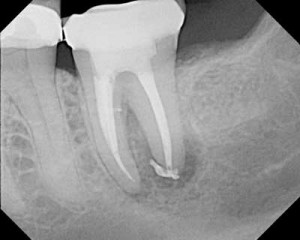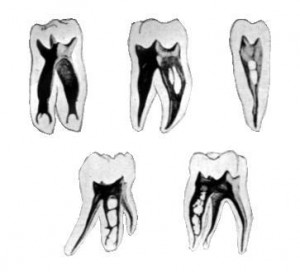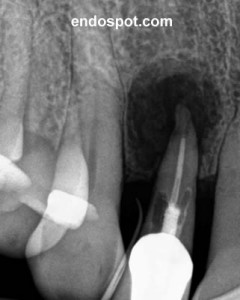Endodontic treatment, which is often referred to as root canal treatment (RCT), root canal procedure or root canal therapy, involves pulp and root canal removal as well as cleaning and filling of the resultant space, in order to prevent microorganisms from multiplying within the root canal system and spreading to the gum tissues. Like any dental procedure, there can be hits and misses with root canal treatment. There is no guarantee that every root canal treatment case would have 100% success for there may be certain factors beyond the dentist’s control or it might be just plain human error.
What are the possible root canal treatment complications?
Root canal problems during treatment
- Complex root canal system – One of the reasons that can lead to RCT failure is the presence of an extra canal beyond what is expected in the tooth. For example, a tooth with three roots may have four canals. If the extra canal is not found, it will become infected and may lead to tooth abscess formation. Even though all the canals may be located, there can be cases where the canals are complicated or deep in the system which makes instrumentation difficult or impossible to reach.
- Root canal pain during root canal treatment – This is usually due to instruments or irrigant solution, or to debris being forced into the gum tissues through the root canal. Occasionally the pain may only occur after the treatment is done.
- Fractured instruments – Sometimes instrument files can fracture while cleaning and shaping the canal due to obstruction within it such as pulp stones. While most of the fractured tips can be flushed out or removed, some may be lodged at the bottom and may resort to surgical removal as a last-ditch solution.
- Perforation of root – During cleaning and shaping of canals, instruments may accidentally perforate the root and if the opening is left unattended, bacteria can enter through the site of perforation.
Root canal problems after treatment
- Root canal pain after root canal treatment – Sudden flare-up after root canal treatment is more likely to occur in tooth with dead pulp and in those who suffer from allergies. The flare-ups could be expected when treatment is inadequate or infected debris is pushed out through the root into the gum tissues.
- Re-infection of the tooth – Poor cleaning and sealing of the root canals as well as defective crown or filling placed after the treatment can lead to re-infection of the root canals by microorganisms in the mouth which can result in inflammation of the tissues surrounding the tooth.
- Fractured root – If there is an existing crack in the root of the tooth which is undetected, bacteria can re-enter and re-infect the tooth.
Are there any ways to minimize the risks of root canal problems?
If you have to get RCT done anyhow, make sure your dentist or endodontist (root canal specialist) is an experienced one for root canal complications can be caused by inexperienced hands.
How do I know the root canal treatment is a failure?
Unsuccessful treatment is possible when there is:
- No change, no improvement or worsening in symptoms of the treated tooth.
- Recurrent or persistent swelling and/or pain.
- No change or decrease in clinical signs (for example pain on biting and loose tooth).
- Re-infection of the tooth.
If you have any of the above symptoms after RCT, go back to the dentist who treated you and find out the cause of the symptoms and correct them.
Are there ways to amend root canal treatment complications?
Yes, depending on what the root canal treatment problem is, there are methods to rectify the problem.
- Root canal pain and swelling can be managed with pain killers and antibiotics.
- Minor mishaps can be corrected with another RCT by removing the defect one, clean and shape the canals again, and replace the rubber points on the same tooth.
- If pus is present at the ends of the treated tooth, the pus has to be drained and surgery (apicectomy) may be required to remove the tip of the affected root.
- In the worst case scenario, the affected tooth may need to be extracted, defeating the purpose of root canal treatment in the first place.
How to prevent root canal treatment
There is no outright way in absolutely preventing root canal treatment but you can try to minimize the chances of getting one done by:
- Practicing good oral hygiene with proper tooth brushing techniques and the usage of floss and mouthwash to prevent tooth decay
- Make regular appointments with your dentist to ensure your mouth stays in a healthy condition
- Maintain good general health by having proper nutrition and exercise
- Avoid injury to the teeth



